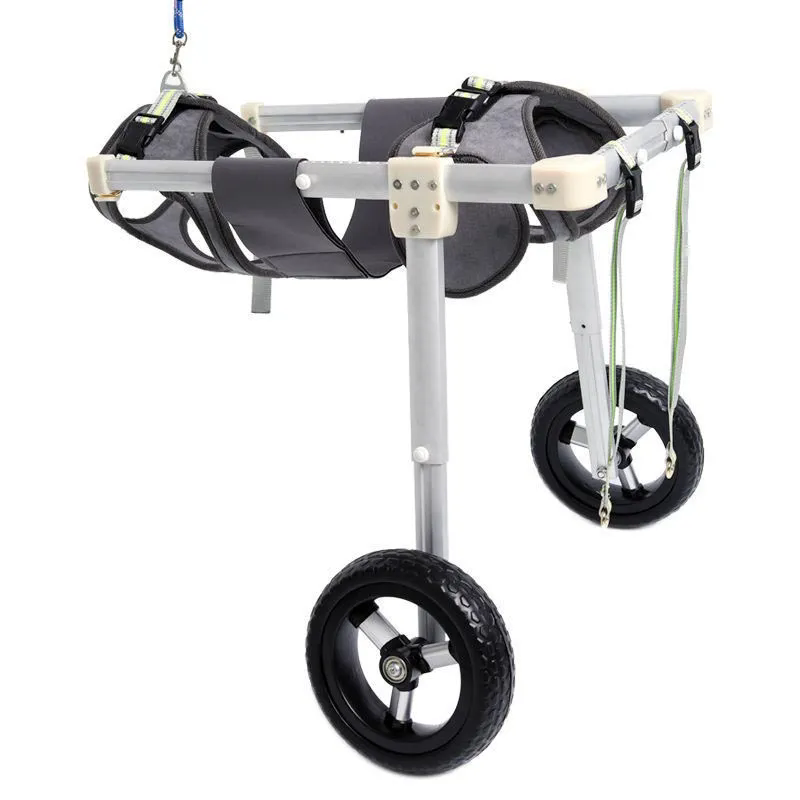Wheelchairs for Disabled Pets: Giving Mobility a Second Chance
2024-10-18
As pet owners, we all want our furry friends to lead happy and fulfilling lives. Unfortunately, some pets may face mobility challenges due to age, injury, or medical conditions. For these pets, a wheelchair can be a life-changing solution. In this blog, we’ll explore the benefits, types, and considerations for using wheelchairs for disabled pets, emphasizing how these innovative devices can enhance the quality of life for our beloved companions.
Understanding Wheelchairs for Pets
Pet wheelchairs are specially designed mobility aids that allow disabled pets to regain their ability to move independently. These devices can accommodate a range of conditions, including arthritis, spinal injuries, hip dysplasia, and neurological disorders. By supporting their hind legs or front legs, pet wheelchairs enable dogs, cats, and other animals to enjoy a more active lifestyle.
Key Features:
- Customizable Fit: Most pet wheelchairs are adjustable to ensure a proper fit, providing comfort and support tailored to the pet's specific needs.
- Durable Materials: High-quality materials are used to construct wheelchairs, making them lightweight yet sturdy enough to handle outdoor terrain.
- Easy Maneuverability: Designed for ease of use, these wheelchairs allow pets to navigate various surfaces, from grass to pavement.
Benefits of Wheelchairs for Disabled Pets
1. Improved Mobility
The primary advantage of a pet wheelchair is enhanced mobility. Disabled pets can move around more freely, enabling them to explore their environment, play, and engage with their owners and other pets.
2. Increased Independence
A wheelchair allows pets to maintain a level of independence they may have lost due to mobility issues. This newfound freedom can significantly improve their mental well-being, reducing feelings of frustration or sadness.
3. Enhanced Quality of Life
With improved mobility and independence, pets can enjoy a better quality of life. They can participate in family activities, go for walks, and experience the joy of outdoor exploration, contributing to their overall happiness.
4. Health Benefits
Regular movement is essential for a pet's physical health. Wheelchairs promote activity, which can help maintain muscle tone, reduce the risk of obesity, and support cardiovascular health. Additionally, mobility can enhance circulation and digestion.
5. Bonding Opportunities
Using a wheelchair can strengthen the bond between pets and their owners. Engaging in outdoor activities together creates opportunities for shared experiences and joy, deepening the relationship.
Types of Pet Wheelchairs
1. Rear Support Wheelchairs
These are the most common type of pet wheelchairs, designed to support the hind legs of dogs and cats. They are ideal for pets with rear leg paralysis or weakness.
2. Front Support Wheelchairs
Front support wheelchairs are designed for pets with limited mobility in their front legs. These devices help lift and support the front of the pet's body, allowing them to walk more naturally.
3. All-Terrain Wheelchairs
All-terrain wheelchairs are built for pets who enjoy outdoor adventures. They feature larger wheels and rugged construction to handle various surfaces, from trails to grassy parks.
4. Custom-Built Wheelchairs
For pets with unique needs, custom-built wheelchairs can be created. These devices are tailored to fit the pet's size, shape, and specific mobility challenges, ensuring optimal comfort and support.
Considerations When Choosing a Pet Wheelchair
1. Assess Your Pet’s Needs
Before purchasing a wheelchair, evaluate your pet’s mobility challenges and consult with a veterinarian. Understanding your pet's condition will help you choose the right type of wheelchair.
2. Measure Properly
Accurate measurements are crucial for a comfortable fit. Most manufacturers provide guidelines on how to measure your pet, ensuring that the wheelchair supports them correctly.
3. Budget Considerations
Pet wheelchairs can vary in price. While it's essential to consider your budget, investing in a high-quality wheelchair will provide better support and durability for your pet.
4. Gradual Introduction
Introducing your pet to a wheelchair may require patience. Start with short sessions to help them adjust, gradually increasing the time as they become more comfortable.
5. Training and Support
Consider seeking professional guidance from a veterinarian or animal physiotherapist. They can provide tips on how to help your pet adapt to the wheelchair and suggest exercises to enhance their mobility.
Conclusion: A New Lease on Life
Wheelchairs for disabled pets are more than just mobility aids; they represent hope and freedom for our furry companions facing physical challenges. By providing enhanced mobility, increased independence, and improved quality of life, these devices can significantly impact the well-being of disabled pets and their families.
As pet owners, it is our responsibility to ensure our pets live happy and fulfilling lives, regardless of their mobility challenges. If your beloved pet is struggling with mobility, consider exploring the options available in pet wheelchairs. With the right support, your furry friend can experience the joy of movement once again, allowing them to lead a vibrant and active life.



